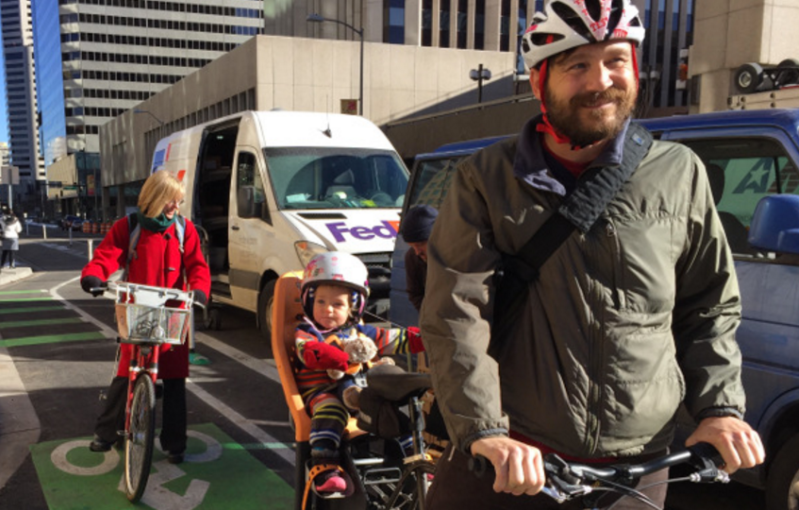Of Course the Lawrence and Arapahoe Protected Bike Lanes Made Ridership Soar

After Denver Public Works installed bike lanes on Arapahoe and Lawrence streets in 2015, people who used them felt safer, and a lot more people biked on the streets. That’s according to early results from a Denver Public Works study documenting the effects of the city’s first parking-protected bikeways [PDF].
The study, derived from surveys and 168 hours of field observation, affirms what we already know from research and experience: Give people safe space to ride that is physically separated from car traffic, and they will ride in that space. But right-of-way politics can jam the slow-churning gears of local government, making documentation helpful when the government, residents, and media balk at allocating public street space for something other than private cars (ahem, Broadway).

“There’s a big body of research on the effectiveness of enhanced bikeways,” said Rachael Bronson, a transportation planner with DPW, “but we wanted something that is Denver-specific that we can share with the community.”
Here are some initial takeaways from the in study, which will add more observation from these bikeways and others when all is said and done.
So many more people biked on the streets
The number of people riding on Lawrence Street jumped 135 percent after DPW installed the bikeway. Arapahoe Street saw a 128 percent increase.
Both increases are very significant, Bronson said. Some perspective: between 2000 and 2014, citywide bike commuting increased just 2 percent.

25 percent of parked cars infringed on the bikeways
No surprise here — DPW found that a quarter of cars observed parked “at least partially” in the bike lane. The study also casually lists “transportation network companies” (Ubers and Lyfts and taxis) as bike lane obstacles.
The plastic posts, or bollards, that are supposed to deter drivers from parking in the bikeways don’t always do the trick. Bronson said 75 percent compliance isn’t bad, considering the new and unfamiliar design, but try telling that to bicyclists suddenly forced into traffic.
DPW will test planters, which physically stop cars from entering bikeways, on Arapahoe Street later this year.
Men ride disproportionately more often than women and families
DPW identified just 23 percent of bikeway riders as female, while 76 percent were observed as being male. Only 1 percent of riders in these bikeways were families with kids.
For Denver to make a dent in its mode share goal of biking and walking accounting for 15 percent of all trips, it will have to create safer spaces that appeal to the “interested but concerned” bicyclists. Bronson said that category includes women and families with children more often than it includes men.
This article was changed to reflect the fact that bike riders did not self-identify as being male or female.


